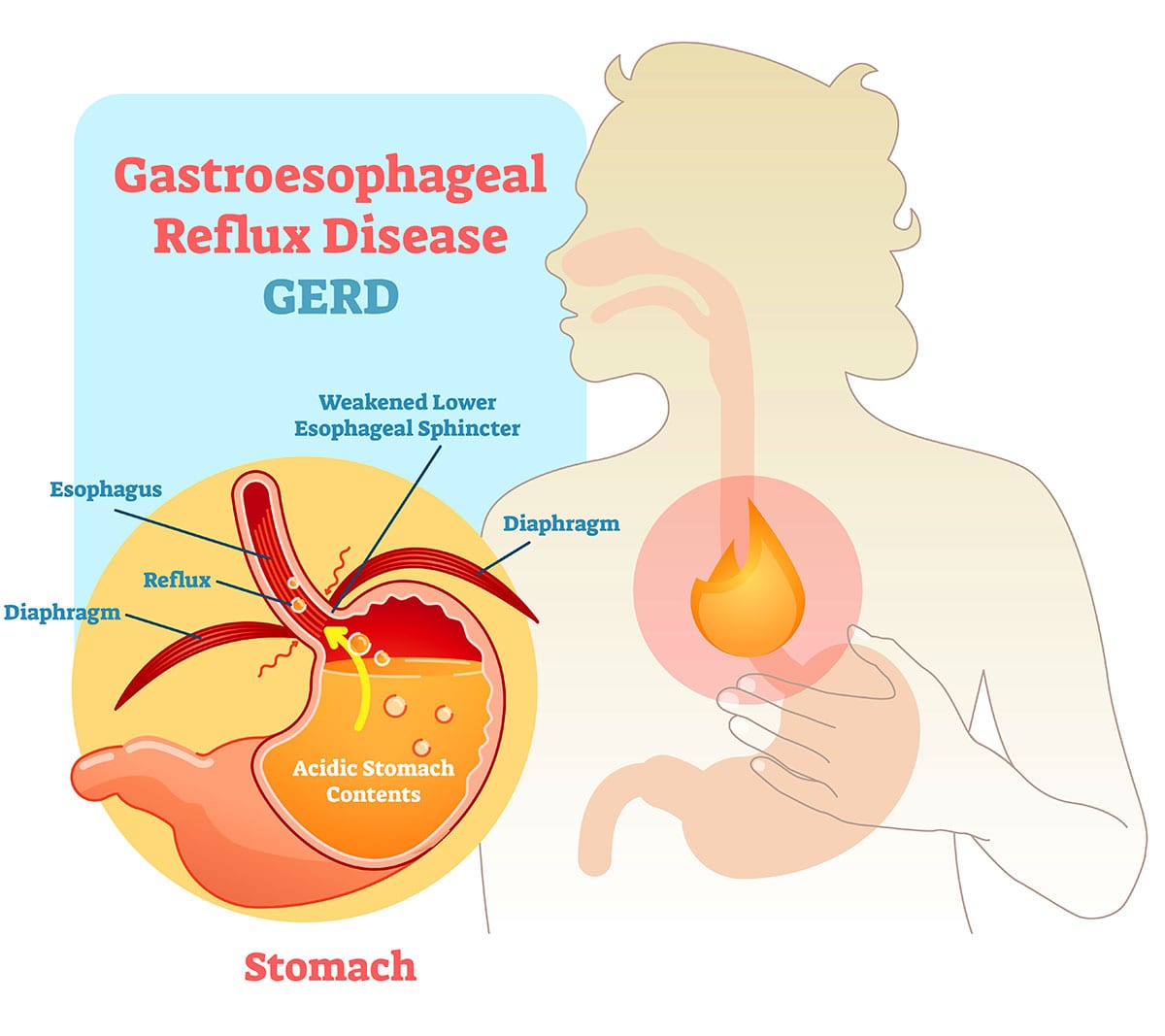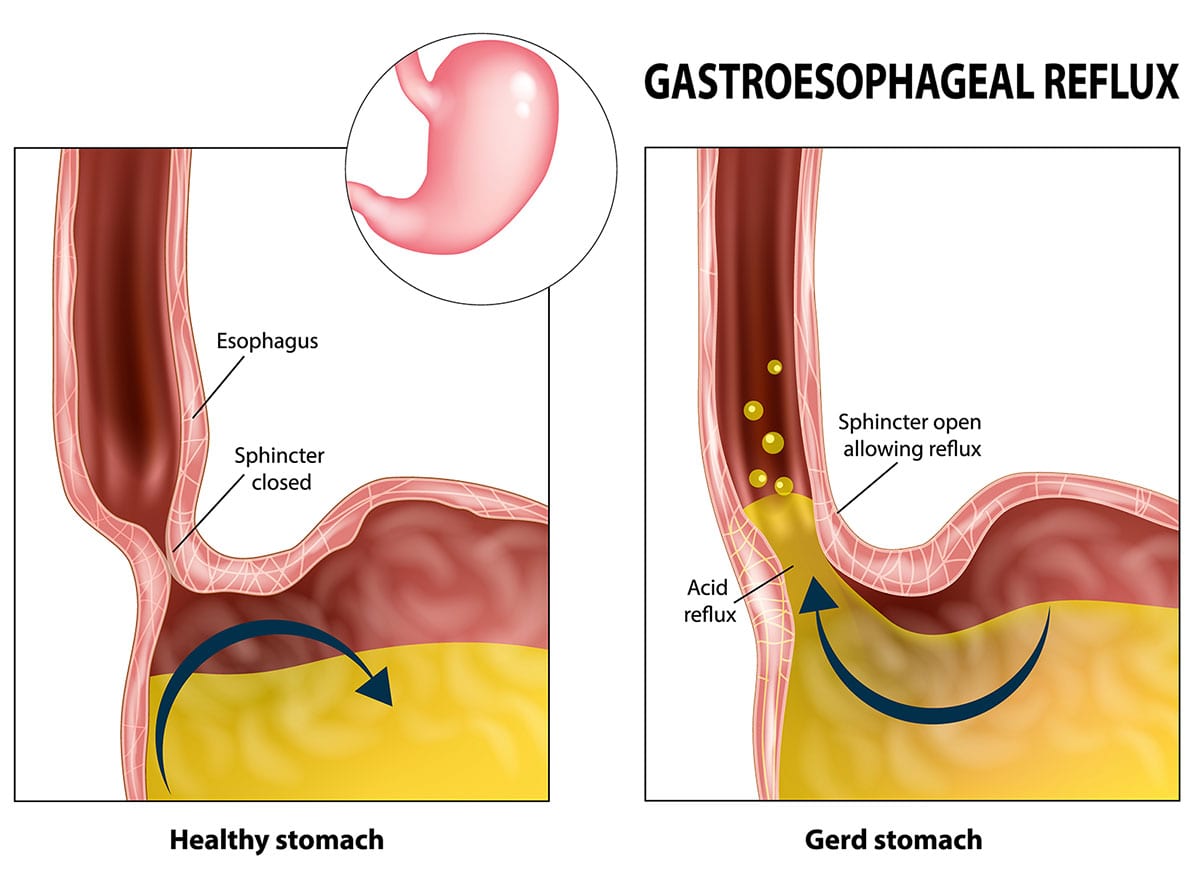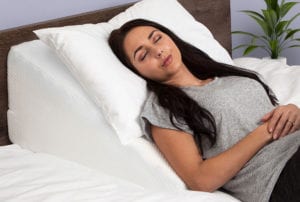Gastroesophageal Reflux Disease
According to recent research 20% of Americans live with Gastroesophageal Reflux Disease or GERD (a chronic condition that affects the digestive system) and 60 million experience heartburn or acid reflux at least once a month. These conditions can cause difficulties in sleeping, the need to exclude certain foods and frequent burning sensations in the chest. Other symptoms may include a persistent sore throat and a chronic cough.

What causes acid reflux?
Acid reflux occurs when some hydrochloric acid from the stomach which usually breaks down food, flows up the esophagus into the gullet. This happens when the gastroesophageal sphincter fails and allows stomach contents to be regurgitated into the esophagus. Whereas the stomach is adapted to protect against this acid, the esophagus is not and so symptoms such as heartburn are often felt. If left untreated, GERD can cause esophageal ulcers, and so it is important to treat these conditions.






In addition to the numerous medical procedures and medications available, lifestyle changes are also very effective at managing the symptoms. Taking steps such as avoiding trigger foods and drinks (e.g. coffee, fizzy drinks etc) and reducing smoking and stress are all reported to have a beneficial effect. However when it comes to sleeping, gravity works against us as the acid will be able to ‘flow’ from the stomach through the open valve into the esophagus.
How can I get rid of acid reflux at night?
A number of research studies have investigated the benefits of raising the upper torso and head to reduce the amount of night time reflux. In a study published in the Journal of Gastroenterology and Hepatology it was found that when the head end of the bed is elevated then the participants had reduced acid reflux. Elevating the head of the bed “has been associated with significantly fewer and shorter reflux episodes, faster acid clearing and fewer reflux symptoms,” the authors conclude. The elevation made gravity ‘your friend again’ in keeping the acid in the stomach.



Sleeping at an angle
In a recent study published in ‘Diseases of the Esophagus’ participants were asked to score their reflux symptoms before and after a trial of using a PTD (Positional Therapy Device) such as a wedge pillow or acid reflux pillow. Significant improvements were seen for the participants over the study period. The report also highlights that 3 months after the study, 91% of participants were still using their PTDs.
The key appears to be in elevating not only the head but the chest also. Dr Deshpande confirms "The majority of the esophagus is actually in the chest, not the neck" and therefore upper torso elevation is essential. Stacking pillows are seen as ineffective for 2 reasons:
- They will only lift your head above your chest and not your chest above your stomach.
- They are likely to cause other spinal issues
An acid reflux bed wedge pillow provides the appropriate level of incline whilst providing the support the torso needs to be elevated and the comfort required to be able to fall asleep. There are a wide variety of acid reflux pillows available to purchase but the following factors should be considered:
- Support – is the pillow made from good quality foam that will not lose its firmness after 6 months of use?
- Memory foam topper – some wedge pillows have a memory foam top which provides a more comfortable surface to lie on whilst the support is provided by the stronger foam underneath.
- Air flow – a few wedge pillows have air flow systems as part of their design to alleviate any overheating issues that foam products can produce.
- Flexibility of height – when purchasing a wedge pillow for the first time it is difficult to know what height to purchase – they are available at heights from 6 inches to 12 inches. People usually have a preference as to the incline on which they sleep but how do you know what that is until you try. Or if recovering from an injury or surgery then the degree of incline would need to be reduced as recovery progresses. There are only a few adjustable pillows on the market.



By far the easiest way to elevate the bed (unless you prefer bricks under the bed legs!) is to buy a wedge pillow. A wedge pillow for snoring or sleep apnea provides the appropriate level of incline whilst providing the support the torso needs to be elevated and the comfort required to be able to fall asleep.



At Zenesse Health we currently produce two wedge pillows. Both are made from a superior quality foam which gives great support to the torso while the egg crate gel infused memory foam cushions to your body providing comforting support. This patented design allows for superior air flow around the body and so prevents the heat generation usually associated with memory foam. The LuxeLift adjustable 12”/8” split wedge enables the user to either sleep on a 12” wedge or an 8” wedge and therefore removing the uncertainty of which to purchase. This pillow is also perfect for injury or surgery recovery due to the incline being able to reduce as the healing process progresses. The CoziLift 8” wedge, shares all the benefits of the adjustable wedge but is a standard 8”. Both are multi-purpose and can also be used as a bed sitting pillow and as a leg elevation pillow.


